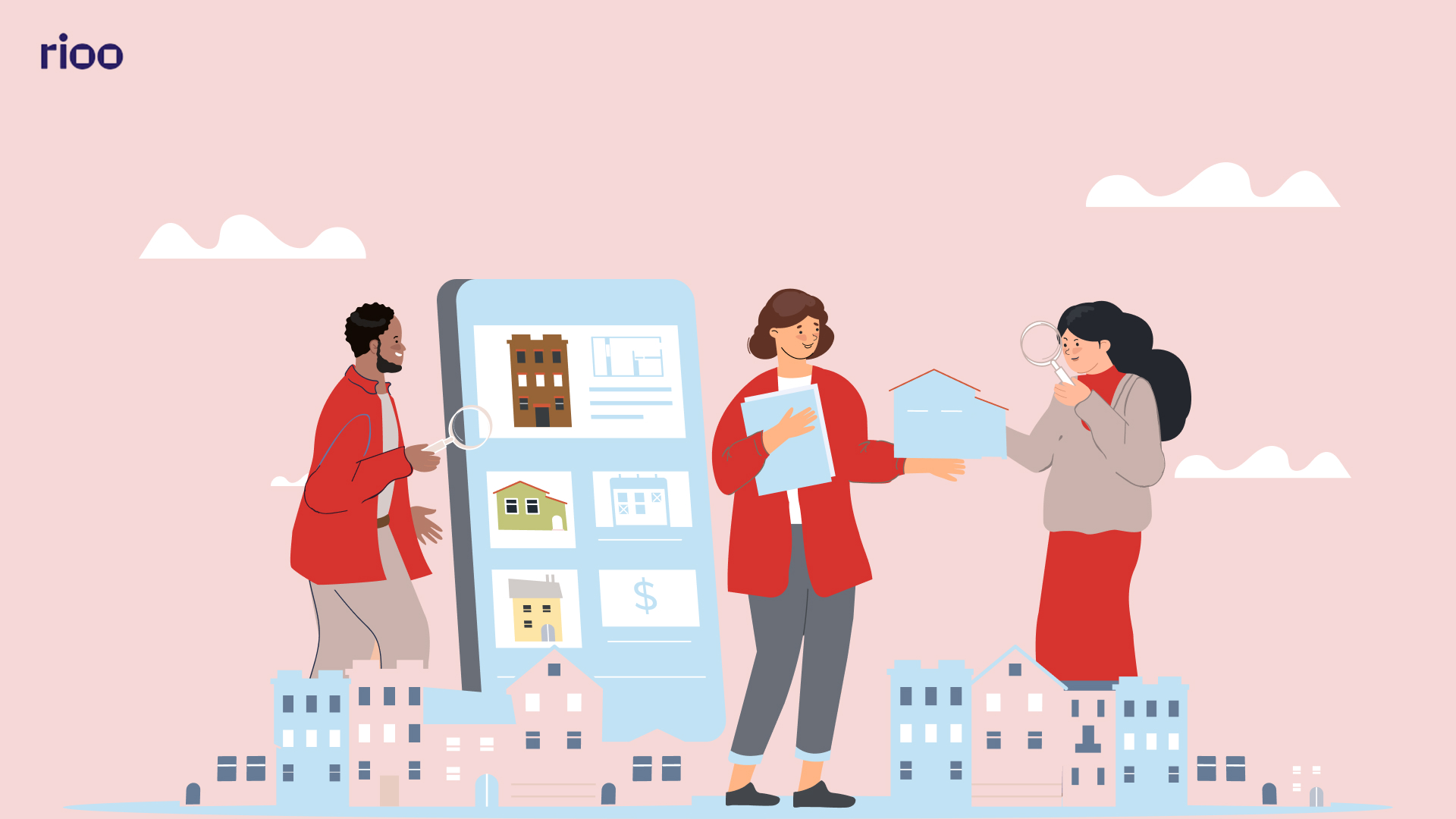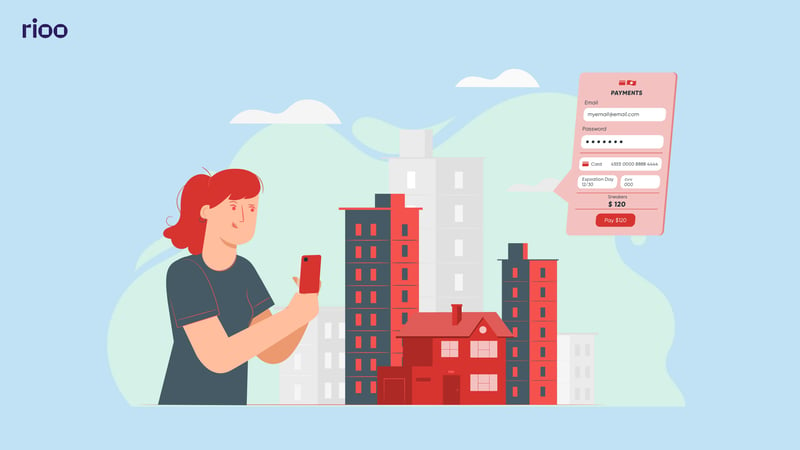According to reports, property managers spend up to 40% of their time on manual administrative tasks, such as maintenance tracking, lease renewals, and tenant communication. If you've ever felt like you're constantly reacting instead of proactively managing, you're not alone.
In an industry where small errors can be costly, efficiency is essential. That’s why leading professionals rely on property management software to streamline operations, minimize mistakes, and scale effectively.
Let’s explore what it is, how it works, and why it’s become essential in modern property management.
What is Property Management Software?
Property management software is an innovative technological solution that helps automate and simplify day-to-day rental operations.
This toolset streamlines tasks such as tenant screening, lease tracking, rent collection, maintenance management, and financial reporting—all within a single, user-friendly platform.
For example, a property manager overseeing 100 residential units once spent hours each week chasing down late rent, fielding maintenance requests through phone calls and texts, and manually updating spreadsheets.
By implementing property management software:
- Rent collection is automated, with tenants receiving reminders and paying through online portals.
- Maintenance requests are submitted through a centralized system, making it easy to assign and track vendor work orders.
- Leases and documents are managed digitally, with notifications for upcoming renewals.
- Financials are seamlessly recorded and synced with accounting tools for quick, accurate reporting.
As a result, the property manager experiences smoother operations, quicker response times, fewer errors, and more time to focus on growing their portfolio and improving tenant satisfaction.
As per reports, the global property management software market is projected to reach USD 27.95 billion by 2025 and grow further to USD 54.16 billion by 2032, reflecting a strong compound annual growth rate (CAGR) of 9.9%.
- Property managers are the leading adopters, making up 44.4% of the global market in 2025.
- In the U.S., property managers/agents held 38.1% of the market share in 2023.
- Housing associations also represented a notable portion, accounting for 31% of the U.S. market.
This growing adoption highlights the increasing reliance on technology to manage properties more efficiently and effectively. Let’s explore the key benefits that make it essential for today’s property professionals.
Benefits of Property Management Software
Property management software doesn’t just streamline daily tasks, but it also improves visibility, communication, and control across your entire portfolio.
- Digital Lease Management: Manage lease agreements digitally with features for e-signatures, automated renewals, and updates to lease terms, reducing paperwork and human error.
- Streamlines Maintenance Requests: Tenants can submit maintenance issues through a dedicated portal, which is then logged, tracked, and assigned to the appropriate staff or vendors for faster resolution.
- Automated Rent Collection: Sends automatic payment reminders, processes online payments securely, and generates digital receipts, making rent collection smoother for both landlords and tenants.
- Centralized Tenant Communication: Keep all tenant interactions, such as rent reminders, announcements, or service updates, in one place for better organization and faster response times.
These benefits highlight how the right software can simplify complex workflows. Now, let’s take a closer look at the key features that power these capabilities.
Key Features of Property Management Software
Property management software offers a range of features designed to simplify and automate the many tasks involved in managing properties.
Here’s what property management software does.
1. Leasing and Sales
One of the core functions of property management software is leasing and sales. This feature allows property managers to easily manage lease agreements, track renewal dates, and ensure timely payments.
- Leasing Management: Centralize the leasing process with tools for tracking, communication, and digital lease handling.
- Tenant Acquisition & Screening: Manage inquiries, applications, and screening (credit, background, rental history) all in one place.
- Contracts & Renewals: Automate lease renewals and rent adjustments with customizable terms and e-signatures.
- Move-ins & Move-outs: Simplify transitions using automated workflows, checklists, and digital documentation.
- Collecting Rent & Payments: Set up automatic reminders, generate customizable invoices, and provide transparent financial reporting.
Suggested Read: Beyond Rent Collection: Unexpected Ways Property Management Software Saves Time
2. Financial Management and Reporting
Offers automated accounting features, including income and expense tracking, profit-and-loss reports, and tax-ready documents. Real-time financial insights help property managers stay on top of budgeting and cash flow.
With centralized financial management, property managers can handle everything from invoicing and late fees to reconciliations without the need for manual spreadsheets. Key features often include:
- Bank Sync and Reconciliation Tools for accurate account balancing
- Income and Expense Transaction Tracking to monitor financial health
- Ledger Adjustment Transactions for flexible accounting corrections
- Built-in Controls such as:
- User permissions
- Transaction history logs
- Detailed account ledgers
- Real-time balance sheets
- Integrated 1099 Tax E-filing and Reporting Tools for easier end-of-year compliance
3. Tenant Portal Maintenance & Mobile Access
Many property management software platforms include a tenant portal, allowing residents or businesses to access essential services online. Tenants can submit maintenance requests, pay rent, and message property managers directly from the portal.
- Reduces administrative workload for property managers by centralizing routine tenant interactions.
- Improves communication and response time between tenants and management.
- Offers a simplified online payment option with easy, secure rent payments, with automated reminders and transaction history.
- Offers tenants 24/7 access to key services, boosting convenience and overall satisfaction.
Are you managing multiple properties and finding it hard to stay organized? A platform like RIOO can streamline rent tracking, maintenance, and communication, reducing your workload and increasing accuracy.
Read more: How Property Management Companies Can Streamline Maintenance with SmartTools
4. Operations Management
Effective property management software includes a variety of built-in tools that help streamline daily operations. Here are two essential functions that drive efficiency and improve tenant satisfaction.
- Receive and assign maintenance requests in real time. Track work orders, coordinate with vendors, and maintain service history from a centralized dashboard.
- Conduct credit, background, and rental checks within the platform. Accelerate approvals while minimizing risk and ensuring compliance.
Also read: Essential Tools for Managing Condos, Townhouses, and Single-Family Homes Together
5. Marketing Tools for Property Managers
Marketing plays a vital role for property management companies by attracting new property owners and expanding their business.
- Strengthen your brand presence and build trust in the market
- Increase visibility through multi-channel property listing syndication
- Publish listings across multiple rental websites from a single platform
- Create professional, high-quality listings with built-in templates
- Monitor listing performance with real-time metrics and insights
- Respond to tenant inquiries quickly and efficiently
- Reduce vacancy periods by accelerating the leasing process
6. Unified Customer Overview
Unified Customer Overview provides a centralized view of all tenant and owner interactions, documents, and activity in one place. This feature helps property managers improve communication, improve service quality, and make more informed decisions.
- Comprehensive customer profiles for easy reference and personalization
- Transparent agreements and billing for better clarity and trust
- Data-driven insights to better understand and serve your customers
- Efficient handling of service requests and issue resolutions
- Proactive management of delinquency and bankruptcy cases
- Centralized address and inspection tracking for organized operations
Read More: How Property Management Software Streamlines Operations for Single-Family and Multifamily Homes
Top 5 Property Management Software
Here is the list of the top 5 platforms tailored to meet the needs of landlords, property managers, and real estate teams of all sizes.
|
Software |
Features |
User-friendliness |
Best For |
|
RIOO |
End-to-end automation, lease tracking, maintenance, and accounting |
High |
Mid- to large-sized property management firms |
|
Buildium |
Rent, maintenance, inspections, accounting, tax filing |
Medium |
Mid- to large-size property management firms |
|
AppFolio Property Manager |
AI leasing, mobile tools, portals, automation |
High |
Larger portfolios, tech-forward teams |
|
TenantCloud |
Free for up to 75 units, online leasing & payments, tenant screening |
High |
Individual landlords, small property managers |
|
Rentec Direct |
Built-in accounting, tenant screening, ACH rent, maintenance tracking |
High |
Small to midsize property owners |
Also Read: The Psychology of Tenant Satisfaction: What Keeps People from Moving Out
Choosing the Right Property Management Software: A Quick Checklist
Selecting the right property management software can streamline operations, improve tenant satisfaction, and boost profitability. Use this quick checklist to ensure you choose a solution that fits your specific needs.
Assess Features & Budget
- List must-have features (e.g., rent collection, maintenance tracking, lease management).
- Set a realistic budget and compare options within your price range.
- Look for scalable solutions that grow with your portfolio.
Check Customer Feedback & Reviews
- Read user reviews on trusted platforms (like G2).
- Look for common complaints or praise (e.g., ease of use, customer support).
- Prioritize software with consistent, positive feedback from property managers like you.
Avoid High-Cost, Low-Value Options
- Be wary of flashy tools with features you won’t use.
- Calculate cost vs. return—does the software save time, reduce errors, or improve tenant satisfaction?
- Trial before you buy: Use free demos or trials to test real-world value.
Also Read: 10 Ways to Streamline Move-Ins and Move-Outs in Rental Properties
Ensure Compliance & Integration
- Choose software that supports legal and regulatory compliance.
- Check for integrations with accounting tools, CRM, or tenant portals.
- Opt for cloud-based systems with data security features.
Conclusion
Managing properties efficiently takes more than just staying organized—it’s about ensuring everything runs smoothly, every single day. That’s where having the right tools truly matters.
With smart, intuitive features for leasing, maintenance, communication, and more, RIOO’s property management software helps you save time, reduce stress, and deliver a better experience for everyone involved.
Streamline property management with RIOO. Book your demo today to simplify leasing, maintenance, and accounting—all in one platform!














